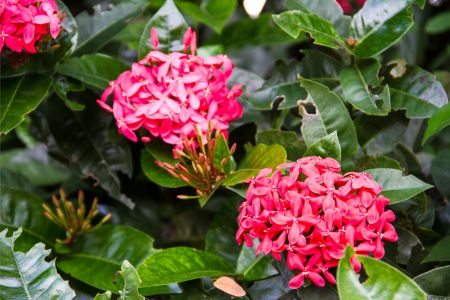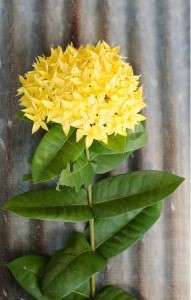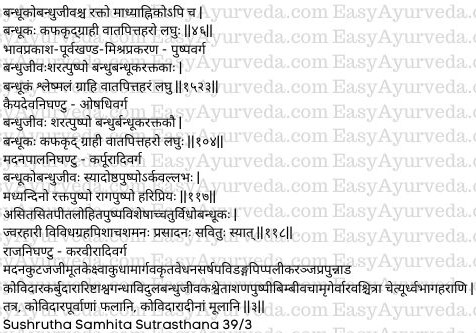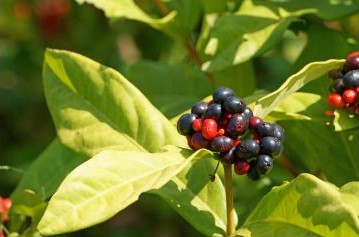Ixora coccinea Uses, Remedies, Qualities, Research
By Dr Renita D’Souza
Table of Contents
Introduction
Ixora coccinea is an Ayurvedic medicinal plant used as natural remedy for diarrhea, painful periods, vaginal white discharge, loss of appetite, nausea, ulcers and gonorrhoea etc. It is used in skin diseases and act as the best blood purifier. This plant is commonly known as Jungle flame/Flame of the Woods. It has beautiful red flowers which are enriched with medicinal values. It is the national flower of Suriname. Yellow variety of flowers are also available. A traditional remedy practiced in South India where 2 -3 drops of tender leaf juice of Ixora coccinea is given to the infants as immunity booster. The plant substrate removes heavy metals, such as lead, cadmium and mercury from polluted water.
Read – Ivy gourd: Benefits, Ayurveda Usage, Remedies, Research, Side Effects
Botanical Name – Ixora coccinea
Family – Rubiaceae

Botanical Description
Ixora coccinea is a an evergreen dense, multi branched hard wooded shrub. Leaves are glossy, leathery, simple, opposite, sessile and oblong with entire margin. Flowers red/yellow in dense corymbose cymes. Fruit globose, red/yellow/white, fleshy containing single seed.
Distribution
Ixora coccinea is found in Southern part of India, Bangladesh and Sri Lanka. It is also cultivated as ornamental plant.
Pharmacological Activities
Ixora coccinea possess Astringent, Antiseptic, Blood-Purifier, Sedative, Antileucorrhoeic, Antidiarrheal, Anti-Catarrhal, Antioxidative, Antibacterial, Gastroprotective, Hepatoprotective, Antinociceptive, Antimutagenic, Antineoplastic and Chemopreventive activities.
Read – Hibiscus Benefits, Usage, Dose, Remedies, Side Effects
Varieties
Mainly there are 3 types based on colour of flowers.
1. Yellow
2. Red
3. White

Therapeutic Indications
Diarrhea
Dysentery
Chronic ulcers
Sores
Fever
Skin diseases
Acne, Blemishes
Leucorrhea
Dysmenorrhea
Haemoptysis
Catarrhal bronchitis
Loss of appetite
Hiccup
Redness of Eye
Part Used
Leaves, Flowers, Root, Bark, Fruits
Read – Land Lotus (Sthalakamal) – Uses, Remedies, Side Effects, Research
Remedies
Fresh Ixora flower juice is put to the eye to treat redness of eye.
Flowers are soaked in luke warm water and this water is used to bathe infants to prevent skin diseases.(B)
Controversy
Although many of Ayurveda scholars consider Bandhuka as Pentapetes phoenicea, some consider it as Ixora coccinea.
Raja Nighantu mentions 4 varieties of Bandhuka – Asitha (black), Sitha (white), Pitha (yellow) and Raktha (Red).
Charaka Samhitha chikitsa sthana 23/181 – Bandujiva is mentioned in visha chikitsa. Nasya with roots of Bhandujiva, Bhaargi and black variety of Surasa is given in Nasya form when the poison has reached the head.
Sushrutha Samhitha – It is mentioned that bhandhuka are seen in autumn season (Su Su 6/36).
He has also mentioned its paste application along with other ingredients in the treatment of blackish discoloration and thorny eruptions in the face caused by the use of poisoned cosmetics. (Su. Ka 1/61).
Read – Charaka Visha Chikitsa 23rd Chapter of Chikitsa Sthana
Sanskrit Verses

Medicinal Qualities of Bandhuka
Quality (Guna) – Laghu (light to digest)
Action (Karma) – Graahi
Jwarahara (R.N)
Grahapishachaashmana (R.N) – wards off evil
Prasadana (R.N)
Effect on Dosha –
Shleshmala – Increases kapha dosha
Vatapittahara – Balances aggravated Vata and Pitta dosha.

Chemical Constituents
Ixora coccinea contains the phytochemicals such as lupeol, ursolic acid, oleanolic acid, sitosterol, rutin, lecocyanadin, anthocyanins, proanthocyanidins, and glycosides of kaempferol and quercetin. (A)
Research
Antidiarrheal activity – A research study conducted on Antidiarrheal activity of flowers of Ixora Coccinea Linn. in albino Wistar rats have proved that aqueous extracts of flowers of I. coccinea have significant antidiarrheal effect.
Antioxidant and Antimicrobial activities – A research study done to evaluate Antioxidant and antimicrobial activities of Ixora coccinea root have proved I. coccinea root has a powerful antioxidant activity and also showed significant antimicrobial activity against Gram-positive and -negative bacteria.
Analgesic, Anti-inflammatory, Antipyretic activities – The study conducted to evaluate analgesic, anti-inflammatory and antipyretic activities of the ethanol extract of Ixora coccinea L. (IC) leaves concluded that the IC leaves possessed analgesic, anti-inflammatory, and antipyretic activities.
Classical Categorization
Bhavaprakasha Nighantu – Pushpavarga
Kaiyadeva Nighantu – Oshadi varga
Madanapaala Nighantu – Karpuradi varga
Raja Nighantu – Karaveeradi Nighantu
Formulations
Paranthyadi Thailam – It is a herbal oil used mainly in the treatment of dermatitis, spider bite, etc
Karappan Thailam – It is an Ayurvedic oil used mainly in the treatment of skin disorders
Scientific Classification
Kingdom – Plantae
Division – Angiosperms
Class – Eudicots
Order – Gentianales
Family – Rubiaceae
Genus – Ixora
Species – I. coccinea
Vernacular Names
English Name – Jungle geranium, Flame of the Woods, Jungle flame
Sanskrit Name – Bandhujivaka, Paaranti
Hindi Name – Rugmini
Kannada Name – Kepula
Bengali Name – Rangan
Malayalam Name – Thetti, Techi, Chethi
Tamil Name – Sinduram, Vedchi
Telugu Name – Koranan, Mankana
Assamese Name – Rangan, Rogiyal-phul, Ronga-rangan
Sanskrit Synonyms
Bandhuka, Bandhujiva,
Maadhyaahika, Madhyandina
Sharatpushpa,
Bandhubandhooka,
Raktaka, Rakta, Raktapushpa, Raagapusha,
Haripriya
Oshtapushpa
Arkavallabha
Click to Consult Dr Renita D’Souza








